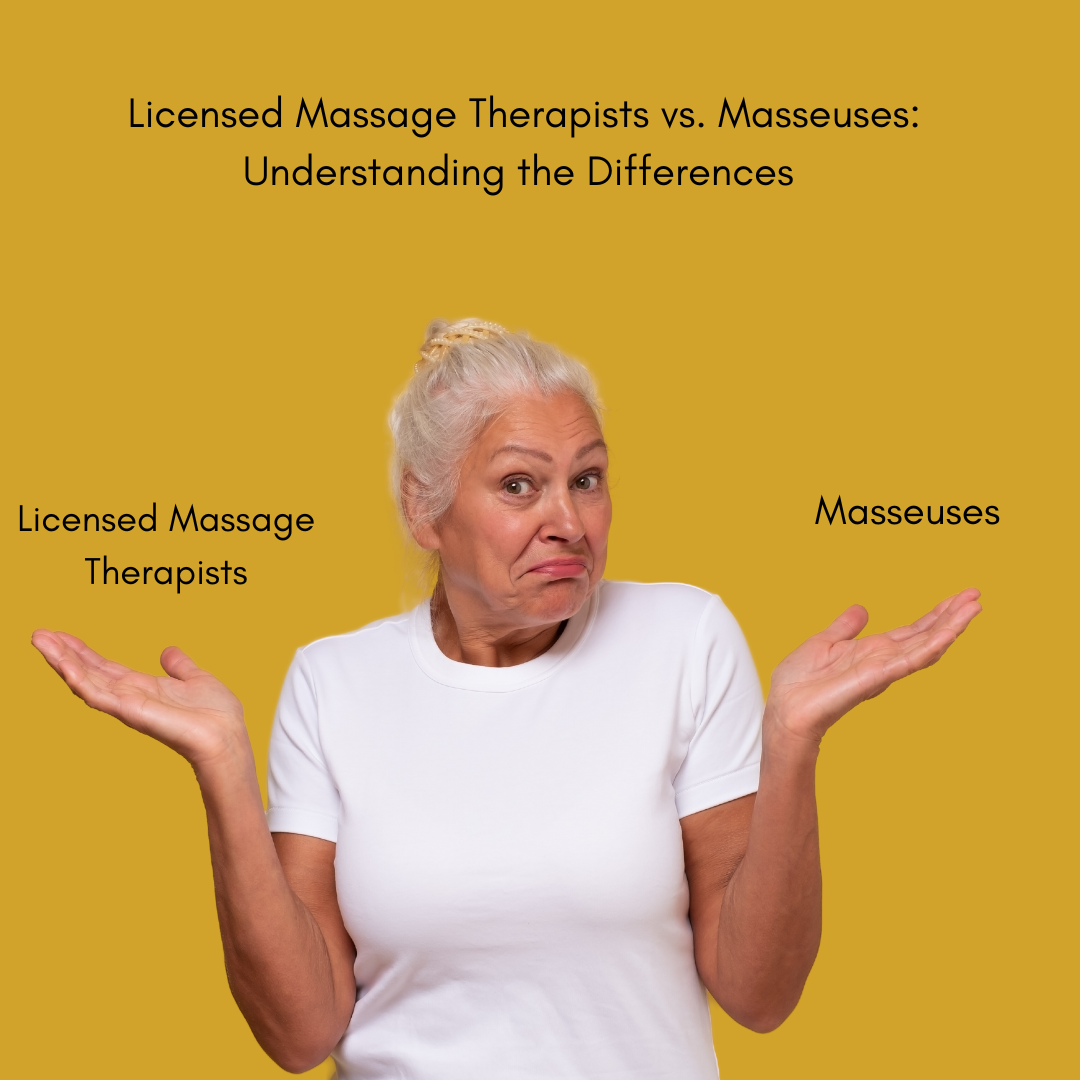When it comes to the world of massage therapy, there's a common misconception that all practitioners are simply referred to as "masseuses." However, it's important to recognize that not all individuals who provide massage services fall under the same category. In fact, there is a significant distinction between licensed massage therapists and masseuses. This article aims to shed light on the differences between the two and highlight why it's crucial to understand their unique roles.
Licensed Massage Therapists: Trained Professionals:
Licensed massage therapists (LMTs) are professionals who have completed a rigorous training program and obtained the necessary credentials to practice legally. They undergo formal education, attending accredited schools or institutions specializing in massage therapy. The training covers anatomy, physiology, ethics, and various massage techniques.
Education and Expertise:
LMTs gain in-depth knowledge of the human body's musculoskeletal system, allowing them to understand the underlying causes of pain and discomfort. They are trained to assess clients' specific needs and create personalized treatment plans to address their concerns effectively. With a deep understanding of anatomy and physiology, LMTs can provide therapeutic massages to promote healing, relaxation, and overall well-being.
Healthcare and Rehabilitation:
Licensed massage therapists at Balance on Buffalo work in conjunction with healthcare professionals to support their clients' recovery from injuries or chronic conditions. We collaborate with chiropractors, physical therapists, and other medical practitioners to develop integrated treatment plans. LMTs play a vital role in facilitating healing, reducing pain, improving range of motion, and enhancing overall physical function.
Ethics and Professionalism:
Licensed massage therapists adhere to strict ethical standards and codes of conduct. They prioritize client safety, comfort, and privacy, maintaining professional boundaries throughout their practice. LMTs also engage in ongoing professional development and stay updated with the latest research and techniques to provide the highest quality of care to their clients.
Masseuses: A Broader Term:
On the other hand, the term "masseuse" is often used more generically to refer to anyone who performs massage, irrespective of their qualifications. Historically, the term was widely used, but it has fallen out of favor in professional settings due to its association with less reputable practices. It is now considered outdated and often carries a connotation of impropriety.
Lack of Regulation and Standardization:
Unlike licensed massage therapists, individuals referred to as "masseuses" may not have formal training, certifications, or licensure. The lack of regulation in this area means that anyone can claim to be a masseuse, regardless of their qualifications or competency. Consequently, clients may encounter inconsistencies in the quality of care and safety when seeking services from non-licensed practitioners.
Personal Preferences:
While some individuals may still use the term "masseuse" to refer to themselves, it is important to clarify their qualifications and background. Some massage practitioners may choose to identify as "masseuses" for personal or cultural reasons, but it is crucial to distinguish them from licensed professionals.
Conclusion:
Understanding the differences between licensed massage therapists and masseuses is essential for clients seeking reliable, high-quality massage services. Licensed massage therapists undergo comprehensive training, possess in-depth knowledge of the human body, and adhere to ethical and professional standards. They collaborate with healthcare professionals to provide effective treatments and prioritize their clients' well-being. On the other hand, the term "masseuse" is often used generically and lacks standardization, potentially leading to inconsistencies in the quality and safety of services provided. By recognizing and respecting these distinctions, individuals can make informed choices when seeking therapeutic massage and ensure a positive and beneficial experience.

